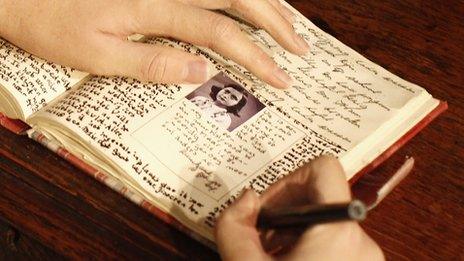'Anne Frank link' unearthed at Sobibor camp
- Published
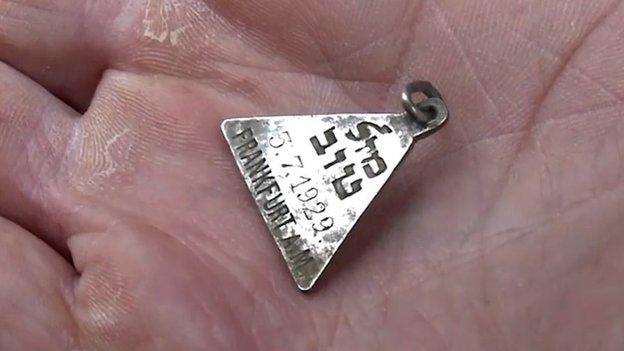
The pendant bears a date of birth and the city of Frankfurt
Researchers excavating the site of the Nazi death camp at Sobibor have discovered a pendant nearly identical to one owned by Anne Frank.
Experts from Israel's Yad Vashem Holocaust memorial team believe the pendant belonged to Karoline Cohn, who may have known the famous diarist.
Like Frank, Cohn was born in Frankfurt in 1929. Yad Vashem traced her via a date of birth engraved on the pendant.
Historians say they have found evidence of only two pendants of the kind.
The small triangular pendant is engraved on one side with the words "Mazal Tov" (congratulations) in Hebrew, alongside Cohn's date of birth and the name of her home city - Frankfurt.
On the reverse is the Hebrew letter "Hay", often used to represent a name of God, surrounded by three Stars of David.
Researchers are now trying to discover from any remaining relatives whether the two girls could have been related.
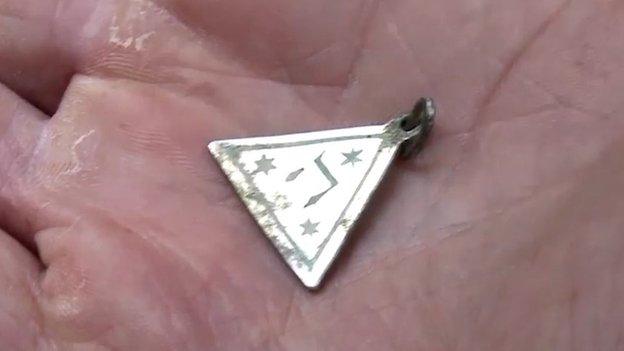
On the reverse is the Hebrew character for God and three Stars of David
Yad Vashem is working alongside the Israel Antiquities Authority (IAA) to excavate parts of the former death camp at Sobibor.
The pendant was found at what is believed to be the location where victims undressed and had their heads shaved before being sent into the gas chambers.
Yad Vashem said the items recovered, which also included a Star of David necklace and a woman's watch, probably fell through the floorboards and remained buried.
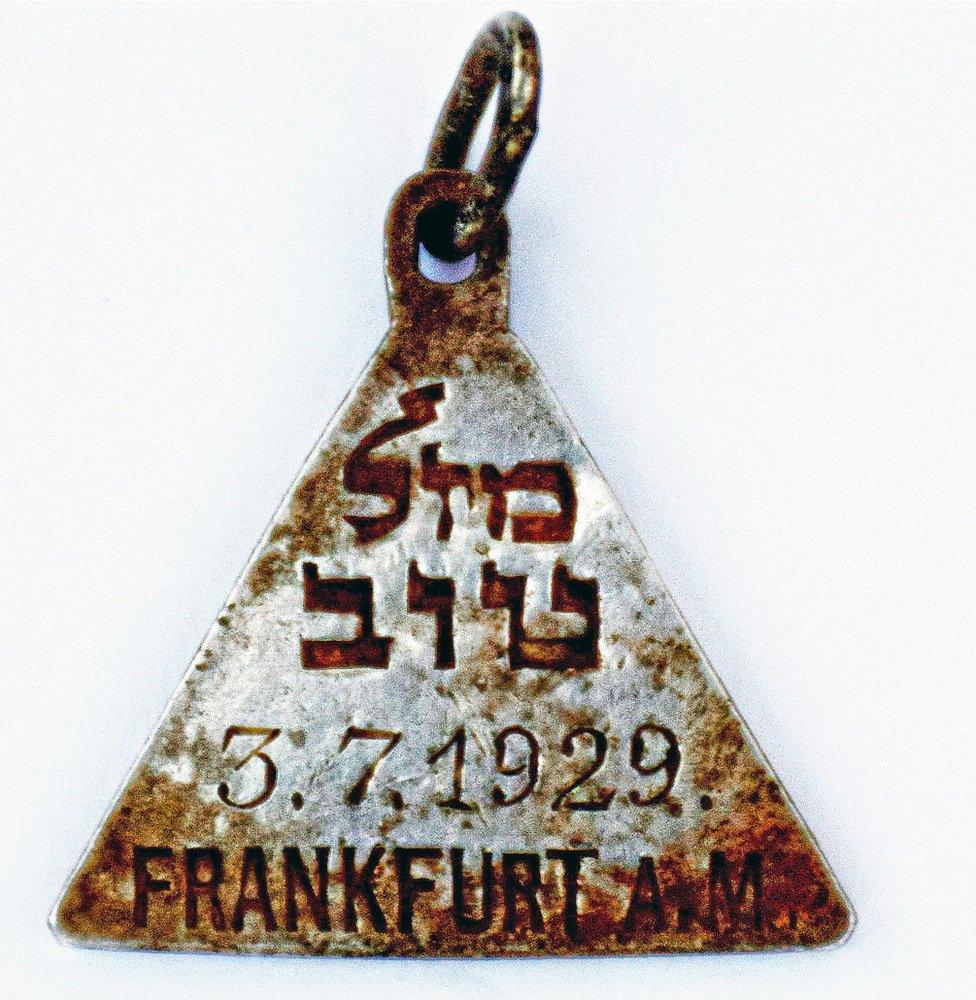
Cohn was born in Frankfurt on 3 July 1929. She was deported from the city on 11 November 1941 to the Minsk ghetto.
The ghetto was liquidated in September 1943 and Cohn may have been among some 2,000 of its residents sent to Sobibor, where the pendant lay concealed for more than 70 years.
Records show that Frank owned a nearly identical pendant, differing only in the date of birth engraved on one side.
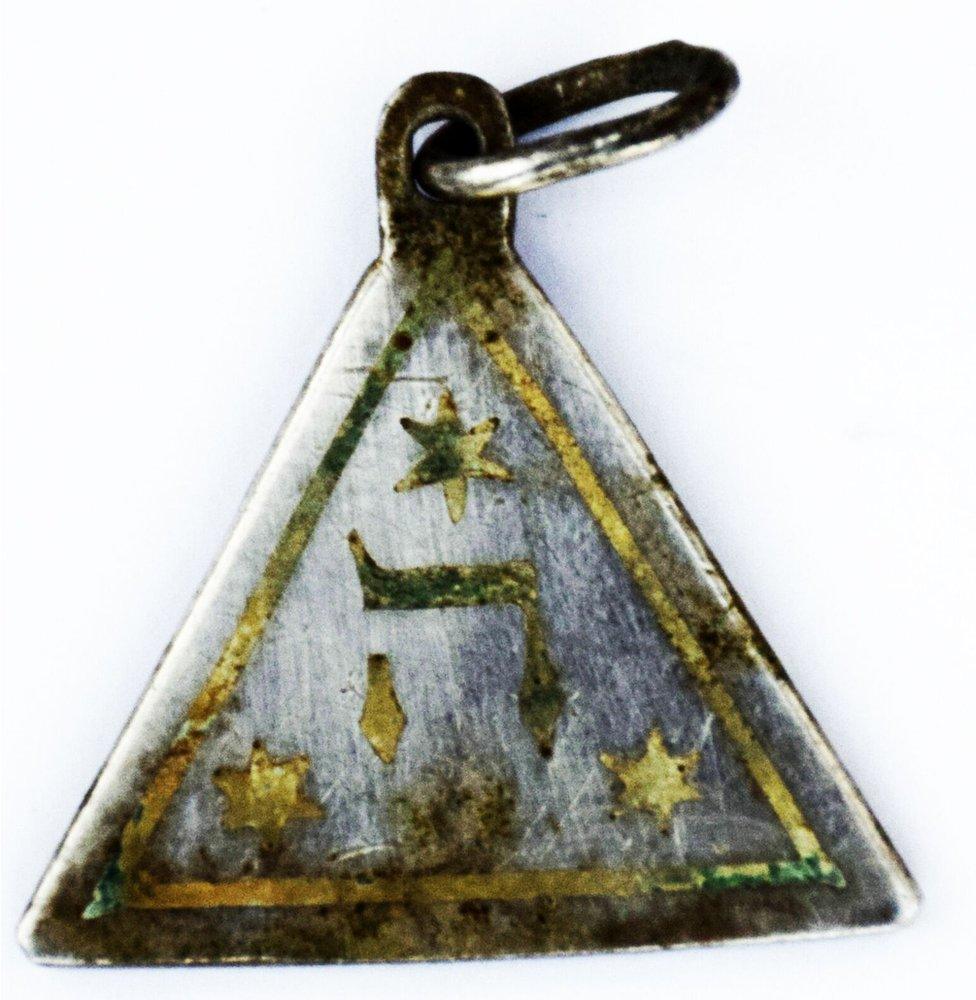
Yoram Haimi, an archaeologist with the IAA who led the excavation at Sobibor, said: "This pendant demonstrates once again the importance of archaeological research of former Nazi death camp sites.
"The moving story of Karoline Cohn is symbolic of the shared fate of the Jews murdered in the camp. It is important to tell the story, so that we never forget."
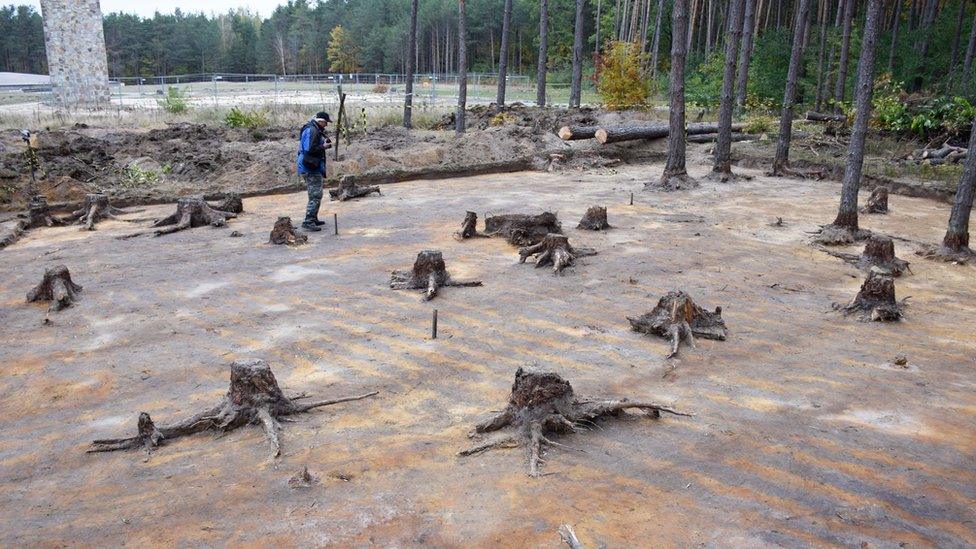
Part of the excavation site at Sobibor, which the Nazis attempted to bury in 1943
More than 250,000 Jews are believed to have been killed at Sobibor, in Nazi-controlled eastern Poland. Unlike some facilities which also functioned as labour camps, Sobibor was among the Nazi camps built solely to exterminate Jews.
The Nazis destroyed the camp following an uprising in 1943 and planted it over in an attempt to cover up their crimes.
Archaeologists have since discovered the foundations of gas chambers and a train platform.
Frank died at the Bergen-Belsen camp, in northern Germany, in 1945.
- Published17 December 2016

- Published23 November 2016

- Published4 April 2016
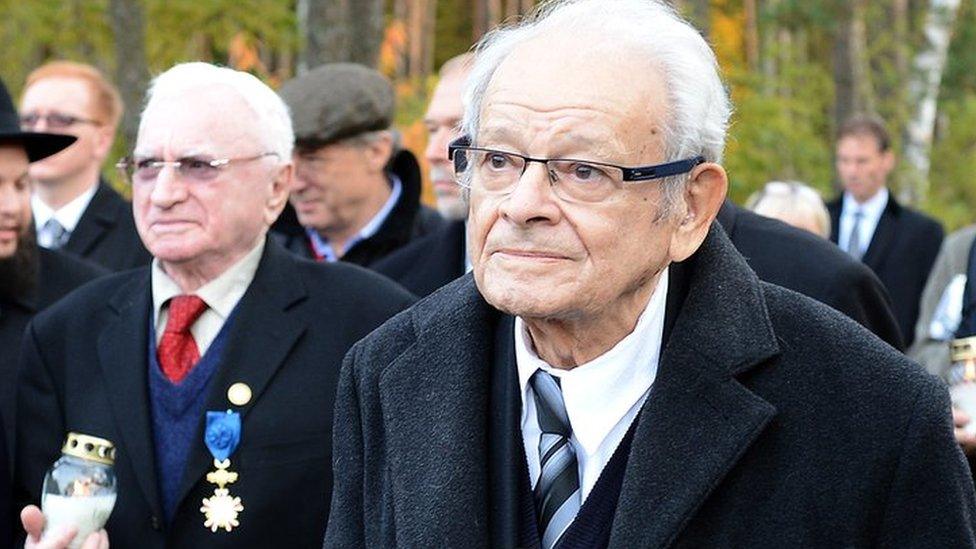
- Published15 February 2016
